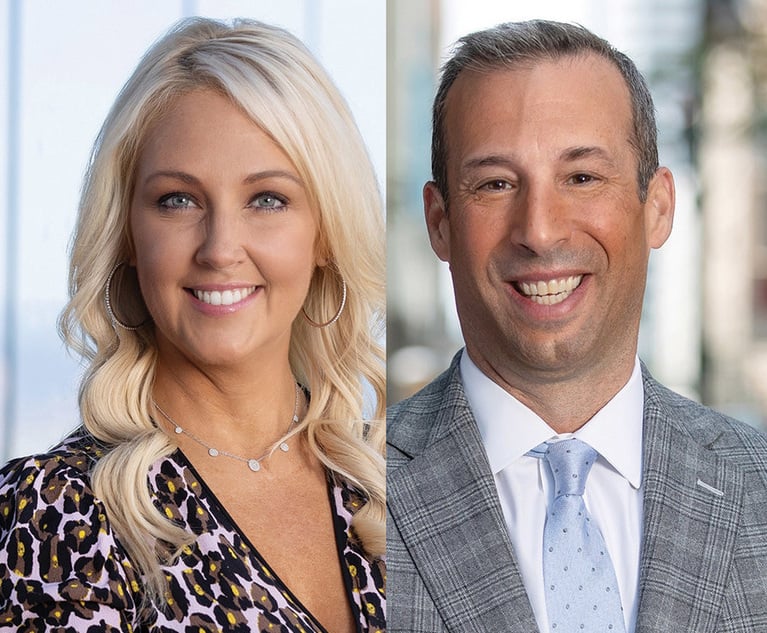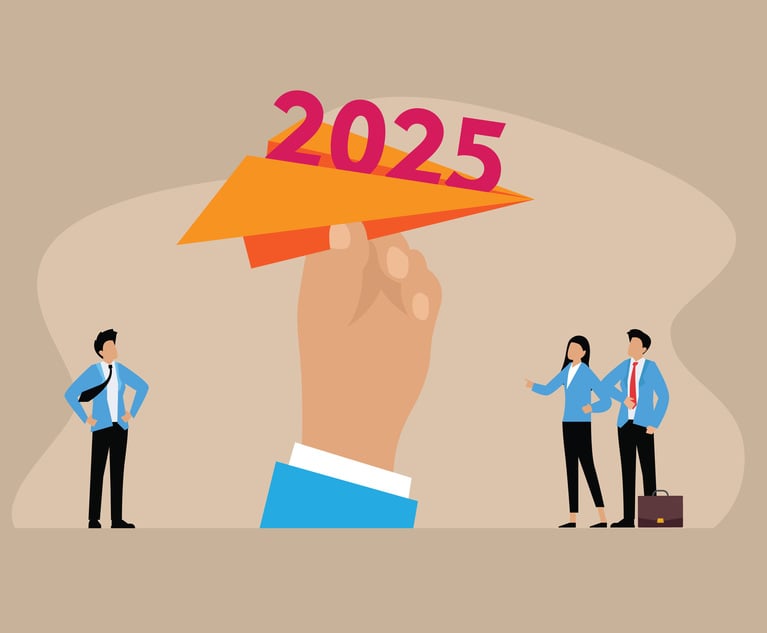 Youth activists for a green new deal at climate protest march during COP26 in Glasgow, Scotland. NOVEMBER 06, 2021. Credit: Toby Parkes/Shutterstock.com
Youth activists for a green new deal at climate protest march during COP26 in Glasgow, Scotland. NOVEMBER 06, 2021. Credit: Toby Parkes/Shutterstock.com Keeping New Climate Promises Brings 1.5°C Goal Closer—But Not in Reach
The latest 2030 plans to curb emissions under the Paris Agreement framework still don't go far enough, a Climate Action Tracker study showed.
November 09, 2021 at 12:36 PM
4 minute read
New net-zero pledges made at United Nations climate talks have created a slim but viable hope that the world could avoid a crucial redline for climate catastrophe, according to a new analysis, but worse outcomes remain possible if countries don't deliver on their promises.
One of the goals of the COP26 summit meeting is to keep alive the chance of limiting global warming to 1.5° Celsius from pre-industrial times. That's the level scientists say gives humanity the best chance of avoiding the worst effects of climate change. Temperatures have already risen by 1.1°C, causing more extreme weather events such as wildfires, drought, and devastating floods.
The latest 2030 plans to curb emissions under the Paris Agreement framework still don't go far enough, a Climate Action Tracker study showed on Tuesday. But if the 197 governments meeting in Glasgow deliver on everything they've announced, including long-term and short-term pledges, the planet will warm by 1.8°C. That's a large improvement over the 2.1°C forecast by the International Energy Agency for warming prior to the ongoing climate talks in Glasgow.
Part of the problem is that countries can choose their own baselines and assumptions. Such variability makes it hard to tell whether, taken together, national commitments are enough to hit 1.5°C. To account for uncertainty, CAT's analysts combined the promises under four scenarios. The best-possible outcome of 1.8°C reflects fulfillment of a slew of new net-zero pledges from some of the world's biggest polluters, even though many lack in details. Almost 90% of global emissions are now covered by commitments to reach carbon neutrality, according to BloombergNEF.
Another scenario takes into account only net-zero goals that were formally submitted to the UN, in documents known as Nationally Determined Contributions. In this scenario, warming rises to 2.1°C. India, the world's third-largest emitter, announced a 2070 net-zero during COP26 talks goal but hasn't formally submitted the new target to the UN.
CAT's temperature forecast increases to 2.4°C when counting only 2030 targets in NDCs. Those pledges cut emissions by as much as 17%, far less than the 50% that's needed to hold temperatures to the 1.5°C goal under the Paris Agreement. A UN analysis of NDCs submitted before COP26 put warming at 2.7°C.
All the temperature outcomes are still obscured by large uncertainties. Scientists can't precisely predict just how much warming could be triggered by a certain amount of greenhouse gases in the atmosphere. In just the most optimistic scenario, warming could be as low as 1.5°C or as high as 2.4°C. The difficulties in predicting future global warming is why experts advocate for deeper emissions cuts as soon as possible.
The biggest absolute contributions to the drop in near-term emissions came from pledges made by China, the U.S. and the European Union. Some countries, such as Indonesia, did not submit stronger targets while others, including Brazil and Mexico, actually lowered their ambitions, CAT said. Countries including Turkey and Kazakhstan did not submit new pledges.
Fossil fuel giants Saudi Arabia and Australia also made pledges to zero out emissions, in 2060 and 2050, respectively. But Australia didn't upgrade its ambition for the end of the decade, and CAT says Saudi Arabia's goals are "difficult to assess" because of a lack of clarity about how it's measuring reductions.
The discrepancy between distant net-zero goals and short-term targets is a problem, says Bill Hare, chief executive of Climate Analytics, a CAT partner organization.
"It's all very well for leaders to claim they have a net-zero target," he said, "but if they have no plans as to how to get there, and their 2030 targets are as low as so many of them are, then frankly, these net zero targets are just lip service to real climate action."
Jess Shankleman, Hayley Warren and Akshat Rathi report for Bloomberg.
NOT FOR REPRINT
© 2025 ALM Global, LLC, All Rights Reserved. Request academic re-use from www.copyright.com. All other uses, submit a request to [email protected]. For more information visit Asset & Logo Licensing.
You Might Like
View All

Special Counsel Jack Smith Prepares Final Report as Trump Opposes Its Release
4 minute read
These Law Firm Leaders Are Optimistic About 2025, Citing Deal Pipeline, International Business
6 minute read
'Serious Disruptions'?: Federal Courts Brace for Government Shutdown Threat
3 minute readTrending Stories
Who Got The Work
Michael G. Bongiorno, Andrew Scott Dulberg and Elizabeth E. Driscoll from Wilmer Cutler Pickering Hale and Dorr have stepped in to represent Symbotic Inc., an A.I.-enabled technology platform that focuses on increasing supply chain efficiency, and other defendants in a pending shareholder derivative lawsuit. The case, filed Oct. 2 in Massachusetts District Court by the Brown Law Firm on behalf of Stephen Austen, accuses certain officers and directors of misleading investors in regard to Symbotic's potential for margin growth by failing to disclose that the company was not equipped to timely deploy its systems or manage expenses through project delays. The case, assigned to U.S. District Judge Nathaniel M. Gorton, is 1:24-cv-12522, Austen v. Cohen et al.
Who Got The Work
Edmund Polubinski and Marie Killmond of Davis Polk & Wardwell have entered appearances for data platform software development company MongoDB and other defendants in a pending shareholder derivative lawsuit. The action, filed Oct. 7 in New York Southern District Court by the Brown Law Firm, accuses the company's directors and/or officers of falsely expressing confidence in the company’s restructuring of its sales incentive plan and downplaying the severity of decreases in its upfront commitments. The case is 1:24-cv-07594, Roy v. Ittycheria et al.
Who Got The Work
Amy O. Bruchs and Kurt F. Ellison of Michael Best & Friedrich have entered appearances for Epic Systems Corp. in a pending employment discrimination lawsuit. The suit was filed Sept. 7 in Wisconsin Western District Court by Levine Eisberner LLC and Siri & Glimstad on behalf of a project manager who claims that he was wrongfully terminated after applying for a religious exemption to the defendant's COVID-19 vaccine mandate. The case, assigned to U.S. Magistrate Judge Anita Marie Boor, is 3:24-cv-00630, Secker, Nathan v. Epic Systems Corporation.
Who Got The Work
David X. Sullivan, Thomas J. Finn and Gregory A. Hall from McCarter & English have entered appearances for Sunrun Installation Services in a pending civil rights lawsuit. The complaint was filed Sept. 4 in Connecticut District Court by attorney Robert M. Berke on behalf of former employee George Edward Steins, who was arrested and charged with employing an unregistered home improvement salesperson. The complaint alleges that had Sunrun informed the Connecticut Department of Consumer Protection that the plaintiff's employment had ended in 2017 and that he no longer held Sunrun's home improvement contractor license, he would not have been hit with charges, which were dismissed in May 2024. The case, assigned to U.S. District Judge Jeffrey A. Meyer, is 3:24-cv-01423, Steins v. Sunrun, Inc. et al.
Who Got The Work
Greenberg Traurig shareholder Joshua L. Raskin has entered an appearance for boohoo.com UK Ltd. in a pending patent infringement lawsuit. The suit, filed Sept. 3 in Texas Eastern District Court by Rozier Hardt McDonough on behalf of Alto Dynamics, asserts five patents related to an online shopping platform. The case, assigned to U.S. District Judge Rodney Gilstrap, is 2:24-cv-00719, Alto Dynamics, LLC v. boohoo.com UK Limited.
Featured Firms
Law Offices of Gary Martin Hays & Associates, P.C.
(470) 294-1674
Law Offices of Mark E. Salomone
(857) 444-6468
Smith & Hassler
(713) 739-1250






